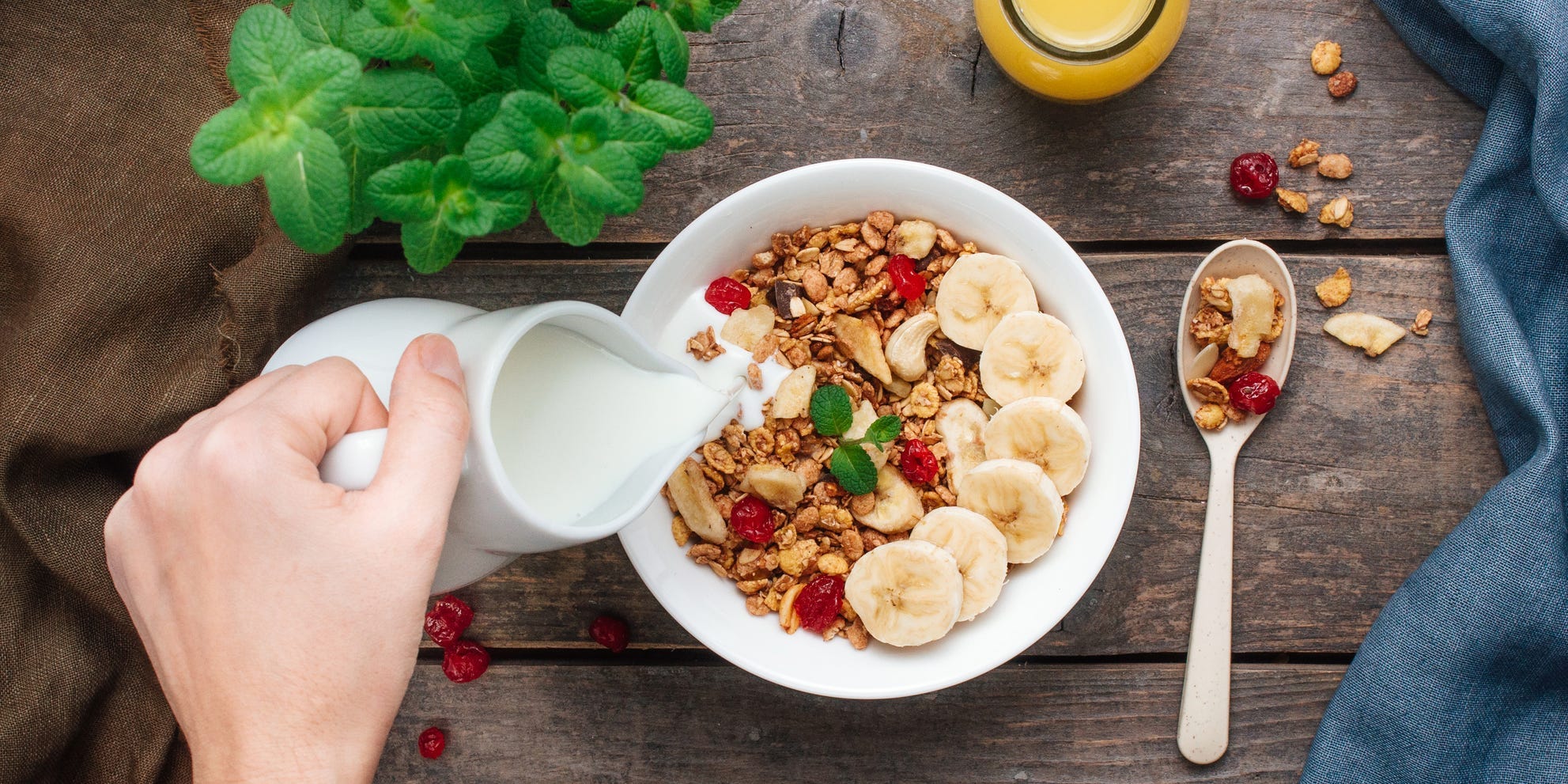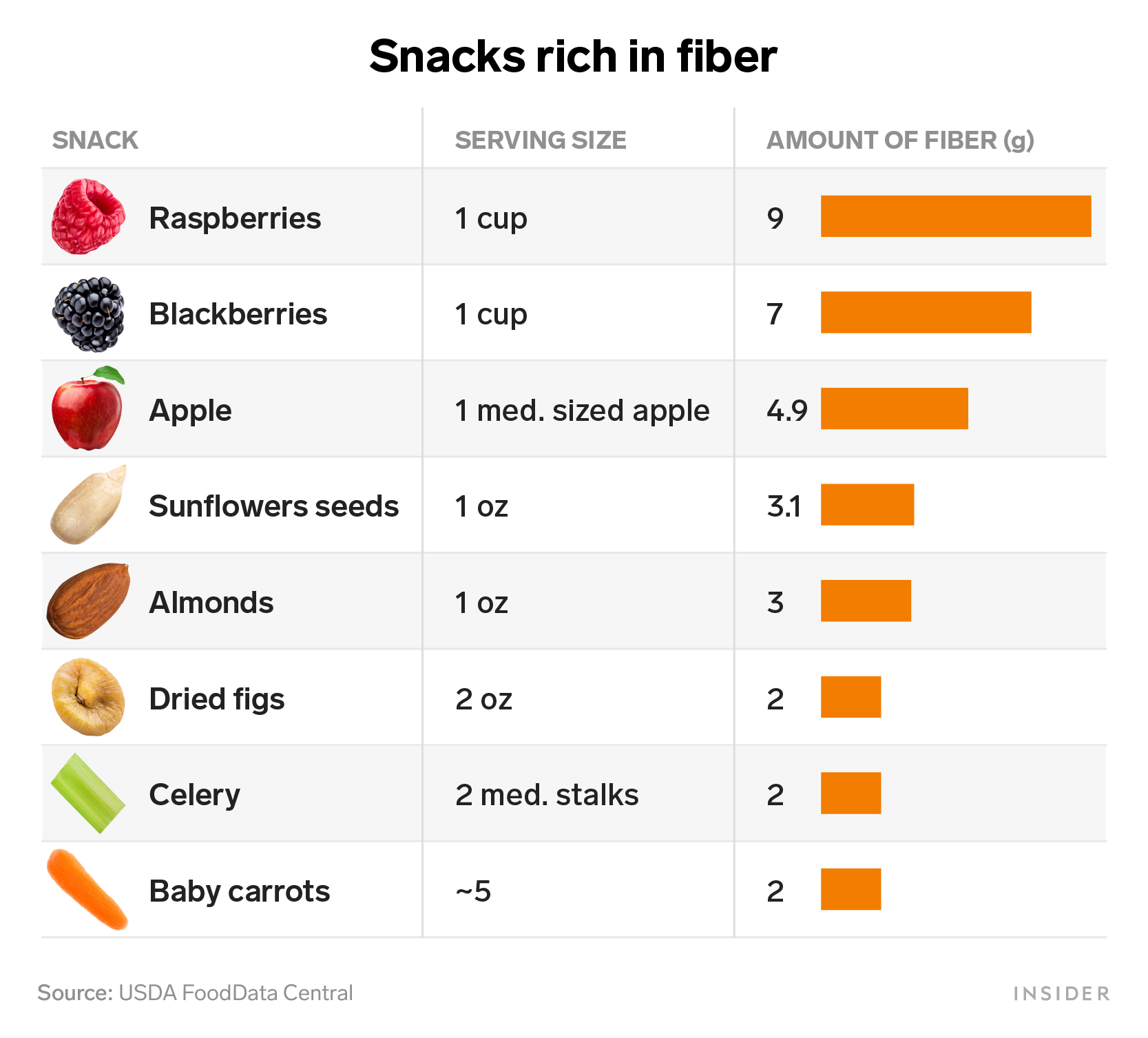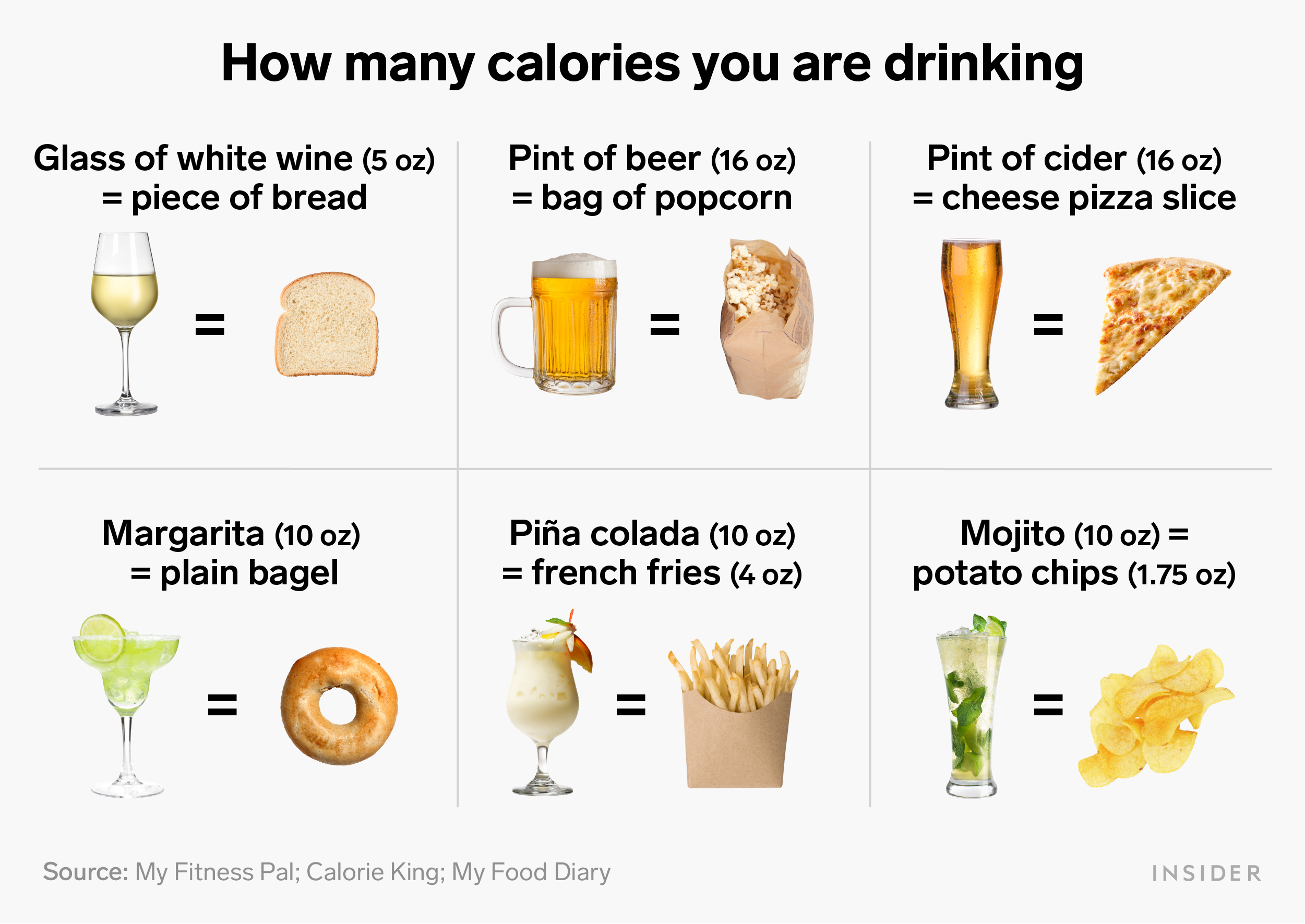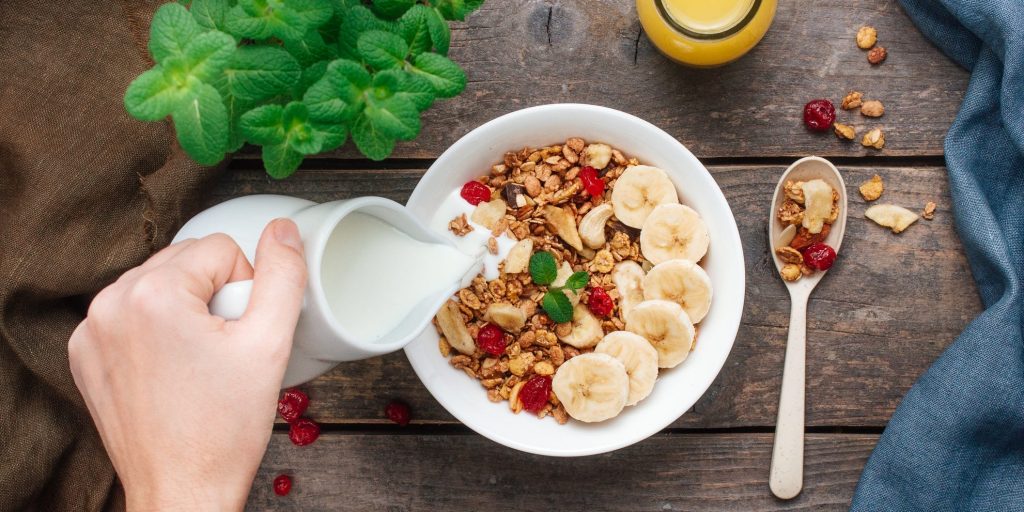
- To lose weight effectively, it's important to focus on small, sustainable changes.
- Key tips include drinking more water, preparing healthy meals ahead of time, and getting more sleep.
- You can also find quick ways for exercise like taking the stairs, doing a workout video, or going for a walk.
- Visit Insider's Health Reference library for more advice.
Losing weight may seem like a daunting process that requires long workouts and carefully planned meals. Although those things certainly play a big role in the process, there are many small changes to your lifestyle that can help you shed pounds.
To find out the little things you can do each day to lose weight, we spoke with three registered dietitians who offered 18 tips.
1. Invest in a water bottle
When you don't drink enough water, your body can confuse hunger with thirst. This is why "upping the water intake can have a huge impact on how much you eat during the day," says Lisa Moskovitz, RD, CEO and founder of the NY Nutrition Group.
If you have trouble drinking enough water throughout the day, there are a couple of ways you can remind yourself. First, carry a water bottle so you always have a physical reminder to drink.
Second, set goals for yourself throughout the day. Moskovitz recommends starting the day with a glass of water and having at least two cups before each meal or snack. "Not only will that help curb your appetite a little bit right before you eat, but it's a good way to remember to drink first," she says.
2. Eat healthy fats
While fats are often a feared food group, they can actually increase satiety and prevent bingeing later, says Whitney Stuart, RD, the owner of Whitness Nutrition.
Of course, some fats are healthier than others, so when adding fat to your diet, Stuart said it's best to go for nutrient-rich unsaturated fats. These fats, known as polyunsaturated and monounsaturated fat, can be found in avocados, olives, nuts, and fatty fish like salmon.
3. Pay attention to the texture of your food
If you've ever found yourself at the bottom of a pint of ice cream, you're not alone. In fact, ice cream is one of the easiest foods to overeat because of its soft texture.
"One reason why things like ice cream or mashed potatoes are easy to overdo is because the texture is such that it's very easy to just keep eating spoonful after spoonful," says Andy Bellatti, RD, the strategic director of Dietitians for Professional Integrity. "Whereas, if you eat raw vegetables, you have to chew them longer."
That's not to say that you can't enjoy foods like ice cream or mashed potatoes, but it's important to be mindful while you're eating them. It's a good idea to measure out your portions beforehand to avoid overeating.
4. Get more sleep
Not getting enough sleep can raise your stress levels, which can increase the likelihood of weight gain.
"When you don't get enough sleep, your levels of the stress hormone cortisol rise," Stuart says.
Stuart adds that a lack of sleep can also get in the way of weight loss because the less you sleep, the longer you're awake, and the more time there is to eat. She recommends getting at least seven hours of sleep each night.
5. Make plans that don't revolve around eating or drinking
You don't have to go to bars or restaurants with friends to have a good time. There are plenty of other ways you can be social and burn calories at the same time, such as:
- Go sightseeing. Visiting nearby museums, zoos, aquariums, or amusement parks can help you get in your steps without even realizing it.
- Exercise. If it's a sunny day, go for a walk, hike, or bike ride at a local park.
- Make your workouts exciting. You can burn some serious calories by rock climbing, paddleboarding, kayaking, bowling, boating, or ice skating.
6. Prepare breakfast ahead of time
Breakfast is dubbed the most important meal of the day for a reason. Some research has found that skipping breakfast is associated with a greater risk for obesity, diabetes, and high cholesterol — whereas breakfast eaters are often able to maintain a healthier weight.
Stuart says that she often sees clients who skip breakfast because they're pressed for time. She pointed out that breakfast doesn't have to be time-consuming, especially if you prepare something ahead of time.
"I'm a big promoter of making your meals on Sunday and having a nice breakfast casserole or breakfast frittata ready to go that you can eat," Stuart says. Egg-based recipes stocked with vegetables are filling, protein-rich, and last all week. Plus, they can be whipped up in as little as 15 minutes, Stuart says.
7. Fill up on fiber
Eating lots of fiber can help you feel full for longer. To get more fiber, Bellatti recommends eating fruits, vegetables, nuts, seeds, whole grains, beans, and legumes.
Some examples of healthy, fiber-rich snacks include:

8. Use smaller amounts of oil
Although some oils, like avocado or sunflower oil, are healthier than others, Bellatti says they are calorically the same as others. Certain oils can be a great source of healthy fats, but Bellatti recommends getting your fats from whole foods instead.
"Adding half an avocado to a meal gives you the healthy fats but also fiber," he says. "Whereas cooking with avocado oil, while it's healthier from a fat perspective, doesn't really have anything that fills you up."
9. Put more veggies on your plate
Filling the majority of your plate with vegetables is one of the easiest ways to cut down on calories without changing how much you eat.
That said, it's important to load up on the right kind of vegetables. Starchy fare like sweet potatoes and butternut squash are nutritious but they contain more calories than water-heavy veggies such as zucchini and cauliflower, Stuart says.
Some simple ways to incorporate zucchini or cauliflower into your regular diet could be:
- Replace white rice with cauliflower rice
- Choose zucchini noodles over spaghetti
- Try mashed cauliflower in place of mashed potatoes
10. Keep a food log
In a large 2008 study, researchers found that those who kept daily food records of what they were eating lost twice as much weight as those who didn't keep any record. "Food records can be really helpful to write down what you're eating and really examine it," Stuart says.
And if keeping a journal seems like too much, there are also many weight loss apps that can help keep track of what you're eating and stick to a plan that meets your goals.
11. Don't multitask while you're eating
It can be tempting to eat lunch at your desk while you power through work, but it's important to take a break from what you're doing so you can focus your full attention on eating.
"When people are on their laptop working on something, there can be a lot of mindless eating because you're focused on the task at hand," Bellatti says.
12. Find a workout you enjoy
Exercise is one of the most important aspects of healthy weight loss, but it's often only effective if you find workouts that you enjoy doing and will stick to regularly. And it doesn't have to be running or weight lifting.
There are many different types of exercise that can support your weight loss goals and you should try a few of them until you find something you like. For example, consider the following workouts:
13. Cut down on alcohol
Even if you've worked hard to eat healthy all day, a couple of drinks at happy hour can easily set you back hundreds of calories. Here's how alcoholic beverages stack up to common snacks:

Although you won't "miss" these calories, you might feel that you're missing out on social situations when you're not drinking. To get around this, Stuart suggests the following:
- Make social plans that don't include alcohol
- Explain to your friends that you're taking a break from drinking and ask for their support
- Order non-alcoholic cocktails or stick to drinks like LaCroix
14. Do a short workout from a video on YouTube
"With YouTube, there are so many videos where you don't need any equipment," Bellatti says. "You can type in pretty much any time interval and you'll find a guided workout."
To really feel the burn, HIIT workouts are a great place to start. They don't require any equipment, are relatively short, and can be done in a small space.
15. Eat more protein
Protein, especially lean protein, is an essential part of any diet. It fills you up and helps you build and maintain muscle mass, Moskovitz says. Some of the best sources of lean protein include:
- Almonds (6 grams per serving)
- Tuna (6 grams per serving)
- Beans (7 grams per serving)
- Eggs (7 grams per serving)
- Tofu (9 grams per serving)
- Grilled chicken (15 g per serving)
The recommended amount of protein, or dietary reference intake (DRI), is 0.36 grams of protein per pound of body weight, according to the Food and Nutrition Center of the United States Department of Agriculture.
This chart can help you figure out how much protein you need:
| Body weight (lbs) | Daily recommended protein intake (g) |
| 100 | 36 |
| 125 | 45 |
| 150 | 54 |
| 175 | 63 |
| 200 | 72 |
| 225 | 81 |
| 250 | 90 |
| 275 | 99 |
| 300 | 108 |
16. Read the label on your granola bar
Granola bars can be great options for a quick meal or snack if you're on the go, but they can also quickly pack on hundreds of calories in just a few bites.
"Very few nutrition bars are balanced and most of them are very concentrated," Stuart says. "They're smaller than your palm so they don't provide a huge amount of satiety and many of them have lots of added sugars or poor sources of protein."
The only way to know for sure what you're eating is to read the label. Bars shouldn't contain added sugar or more than 2.6 grams of saturated fat and should contain around five grams each of fiber, protein, and fat. Stuart also recommends opting for kid-sized bars that contain fewer calories.
17. Take the stairs
You don't have to complete a full workout to burn calories. Changing your habits to take the stairs more often or walk instead of driving can have a big impact on your weight over time.
"If you've been sitting at your desk for more than two hours, take a brisk walk to get your body moving," Stuart says. Breaking up your day with short walks not only burns calories but could also lessen your risk of developing heart disease and other health problems associated with sitting for long periods of time.
18. Stop eating by the clock
Listening to your body and individual needs is the most important way to stay on top of a healthy weight loss plan. "I don't like the idea that there is one-size-fits-all," Bellatti says. "Part of the success is not eating by the clock, or not eating by rules."
Paying attention to your hunger cues can help you eat more intuitively and make healthy eating a lifestyle that not only helps you lose weight but also keeps it off.
"Some days you might want a large dinner and other days you might just want a bowl of soup," Bellatti says. "As long as you're honoring your hunger, meaning that you're not just having a bowl of soup because you think you look bloated and you want to lose five pounds overnight."
Insider's takeaway
Weight loss is a journey. While it can seem difficult, it may be helpful for you to think about how all the little changes can really add up.
Overall, finding small ways everyday to eat healthy foods, exercise, drink more water, and get enough sleep might end up making a big difference.
For more personalized recommendations to lose weight, you should consult with your doctor, who can help you develop an individual plan for your health needs.
